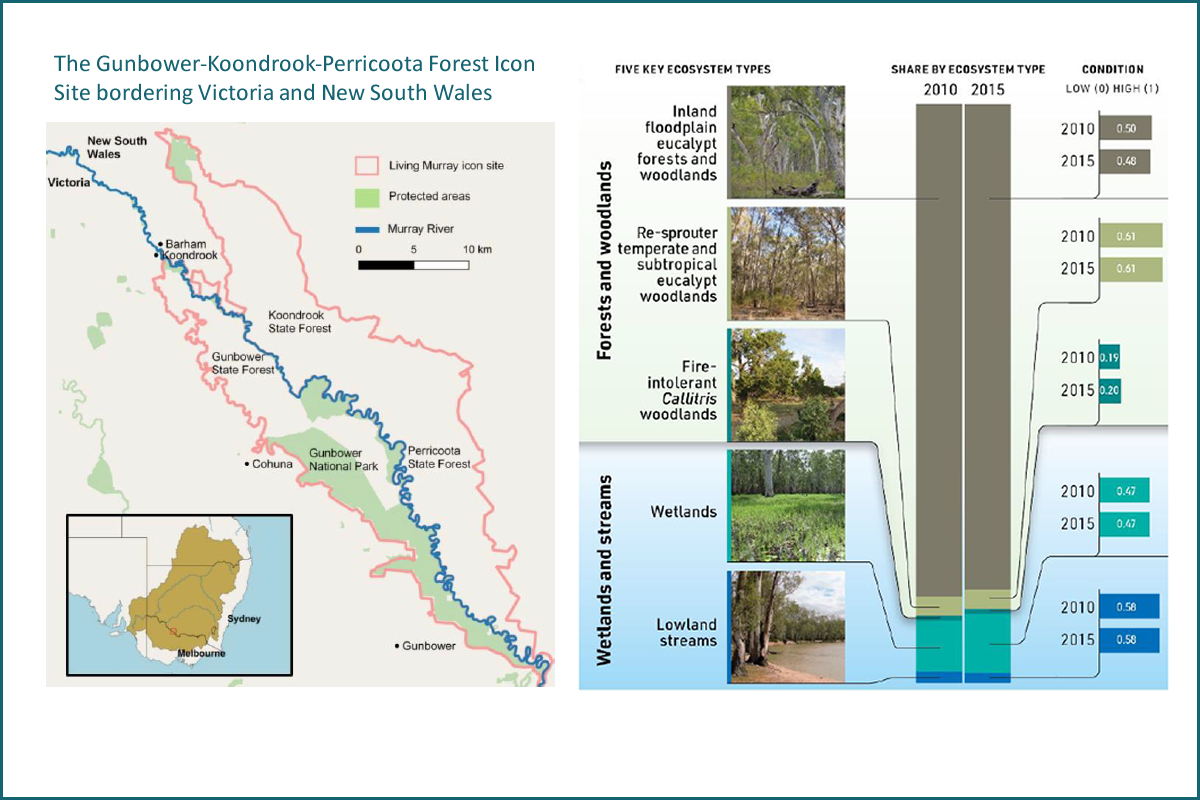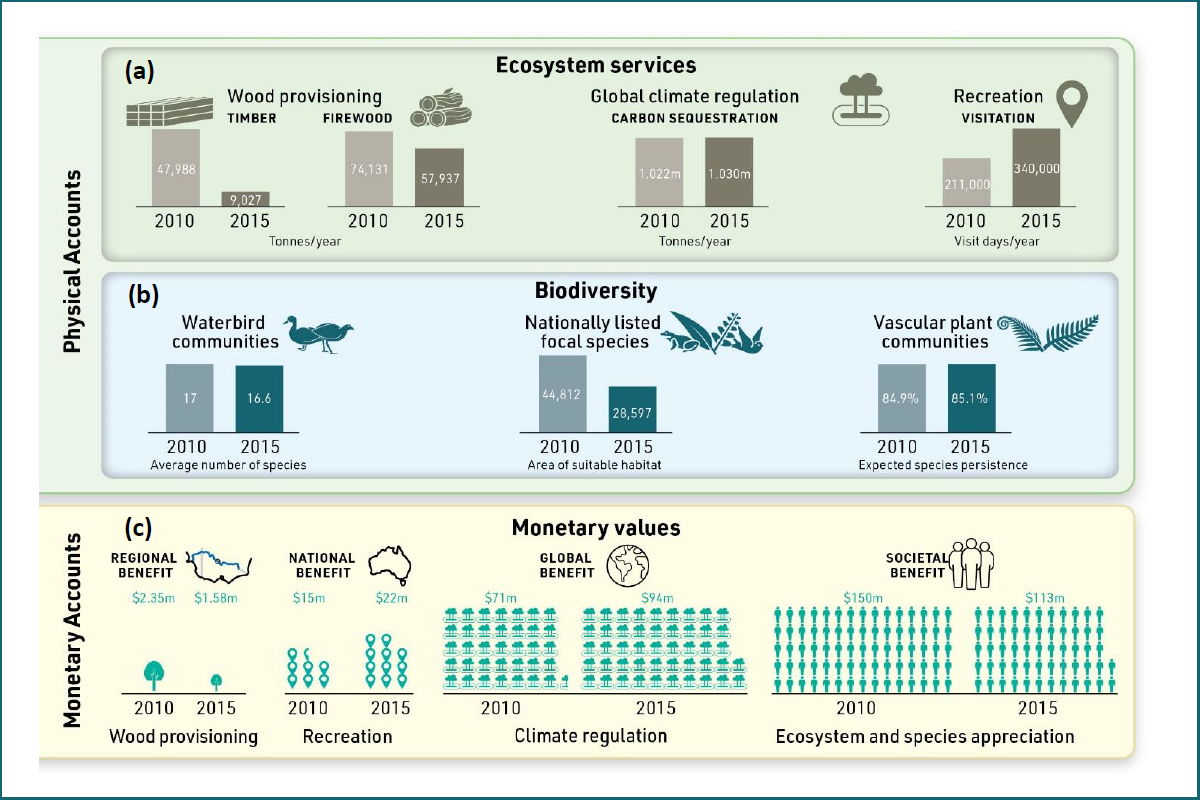Up along the Murray River near Echuca you’ll find 56,000 hectares of precious wetland called the Gunbower-Koondrook-Perricoota (GKP) Forest. This iconic site has coverage in both NSW and Victoria and is on the Ramsar list of the world’s most rare or unique wetlands. It also contains the second largest extent of river red gum forests in Australia and is a nesting site for internationally protected migratory waterbirds.
And now it is the site of one of the first natural capital accounting projects undertaken by the Australian Government under the National Strategy and Action Plan to implement Environmental Accounting in Australia.
The results of the GKP Forest Icon Site ecosystem account pilot have now been published.
The pilot was conducted using data from two years: 2010 and 2015. The results explain that there have been:
- increases in wetland area – a net increase of 808 ha relative to 2010, about 14% of the 2015 extent
- reductions in inland floodplain eucalypt forests and woodlands – a net decrease of 675 ha relative to 2010, about 1.5% of the 2015 extent
- a total supply of carbon sequestration services of 1,022,807 tonnes in 2010 and 1,030,771 tonnes in 2015.


The project took place from 2019 to 2021 in partnership with the Murray-Darling Basin Authority, CSIRO, Marsden Jacobs Associates, IDEEA Group and GHD.
IDEEA Group is proud to be part of the project team that applied the United Nations System of Environmental-Economic Accounting Ecosystem Accounting Framework (UN SEEA), the international best-practice framework for natural capital accounting and the preferred methodology under the National Strategy.
There are four documents that break down the results of the pilot:
